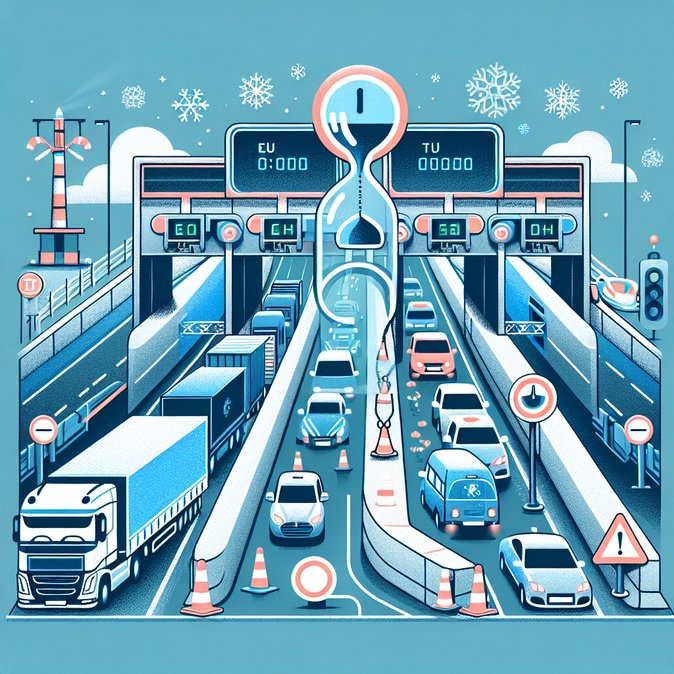
Eurotunnel travellers hoping for a smoother – or at least more predictable – border crossing this winter will have to wait a little longer. On 8 November 2025 Eurotunnel’s parent company, Getlink, confirmed that the EU’s new Entry/Exit System (EES) is operating only for lorry drivers and coach passengers; private cars are *explicitly excluded* until French authorities give the formal green-light.
EES is the cornerstone of the EU’s smarter border strategy. It replaces manual passport stamping with a single enrolment of fingerprints, a facial photograph and passport data, then stores that information for three years. Once fully deployed it will apply to every non-EU national entering or leaving the Schengen area, including British holiday-makers, business travellers and cross-border commuters who drive from the UK to France.
France began a phased launch on 12 October, starting with freight and coaches through Calais, Dunkirk and the Eurotunnel terminal at Folkestone. Getlink says infrastructure for cars — self-service kiosks, biometric booths and redesigned traffic lanes — is finished and tested, but activation is a political call: “The timing of the EES launch is determined by the authorities.” Behind the scenes, border police are worried that switching on car processing too close to Christmas would create gridlock at both Folkestone and Calais, damaging trade and tourism at the worst possible moment.
![Eurotunnel Entry/Exit System still on hold for cars as France delays biometric rollout]()
Under the EU’s transition timetable, at least 10 % of all relevant crossings must be processed with EES by mid-November, rising to 35 % by mid-January and to 100 % six months later. Officials therefore have only a narrow window to delay before Brussels steps in. Once cars are added, every non-EU driver and passenger will need to leave their vehicle, scan their passport, present their face and give fingerprints on their *first* trip; subsequent crossings should be quicker because the data remain valid.
For now, the practical advice is simple:
• Car passengers will continue to use traditional passport inspection.
• Lorry and coach operators should already plan for EES checks and possible dwell-time increases.
• Residents in France or another Schengen state remain exempt if they can prove their status with a residence card.
Companies moving time-critical goods through the Tunnel are urged to brief drivers, factor in additional waiting time once cars join the system, and encourage travellers to carry proof of residence if eligible. Holiday traffic is expected to be more heavily affected than freight once the switch-over happens.
Although the delay buys breathing space, Getlink warns that the deadline is fixed. Travellers should therefore expect a firm activation date – likely with just two weeks’ notice – sometime between late November and mid-January. When it arrives, the first few days will almost certainly be slower; after that, the biometric database should speed things up, achieving the EU’s twin goals of stronger security and shorter queues.
EES is the cornerstone of the EU’s smarter border strategy. It replaces manual passport stamping with a single enrolment of fingerprints, a facial photograph and passport data, then stores that information for three years. Once fully deployed it will apply to every non-EU national entering or leaving the Schengen area, including British holiday-makers, business travellers and cross-border commuters who drive from the UK to France.
France began a phased launch on 12 October, starting with freight and coaches through Calais, Dunkirk and the Eurotunnel terminal at Folkestone. Getlink says infrastructure for cars — self-service kiosks, biometric booths and redesigned traffic lanes — is finished and tested, but activation is a political call: “The timing of the EES launch is determined by the authorities.” Behind the scenes, border police are worried that switching on car processing too close to Christmas would create gridlock at both Folkestone and Calais, damaging trade and tourism at the worst possible moment.

Under the EU’s transition timetable, at least 10 % of all relevant crossings must be processed with EES by mid-November, rising to 35 % by mid-January and to 100 % six months later. Officials therefore have only a narrow window to delay before Brussels steps in. Once cars are added, every non-EU driver and passenger will need to leave their vehicle, scan their passport, present their face and give fingerprints on their *first* trip; subsequent crossings should be quicker because the data remain valid.
For now, the practical advice is simple:
• Car passengers will continue to use traditional passport inspection.
• Lorry and coach operators should already plan for EES checks and possible dwell-time increases.
• Residents in France or another Schengen state remain exempt if they can prove their status with a residence card.
Companies moving time-critical goods through the Tunnel are urged to brief drivers, factor in additional waiting time once cars join the system, and encourage travellers to carry proof of residence if eligible. Holiday traffic is expected to be more heavily affected than freight once the switch-over happens.
Although the delay buys breathing space, Getlink warns that the deadline is fixed. Travellers should therefore expect a firm activation date – likely with just two weeks’ notice – sometime between late November and mid-January. When it arrives, the first few days will almost certainly be slower; after that, the biometric database should speed things up, achieving the EU’s twin goals of stronger security and shorter queues.









